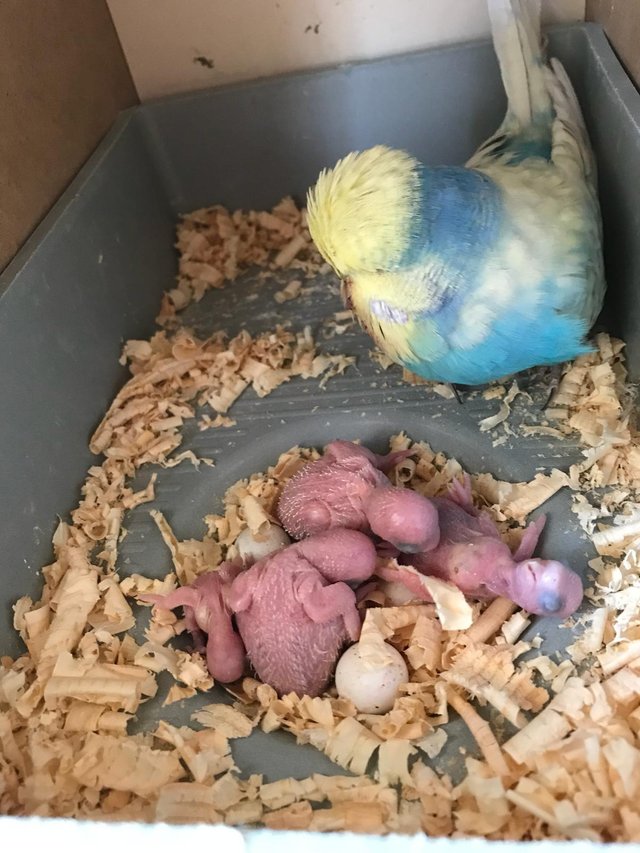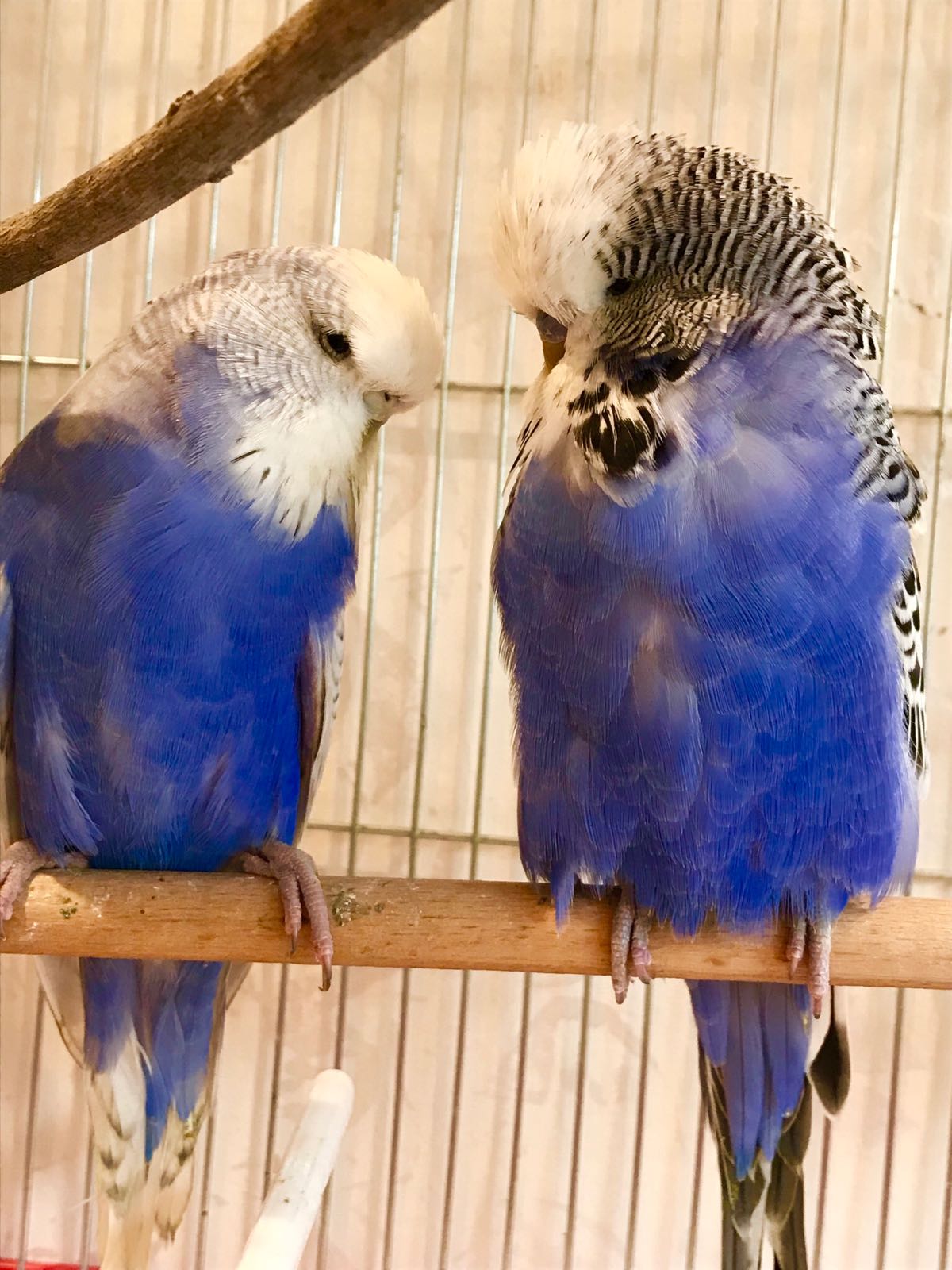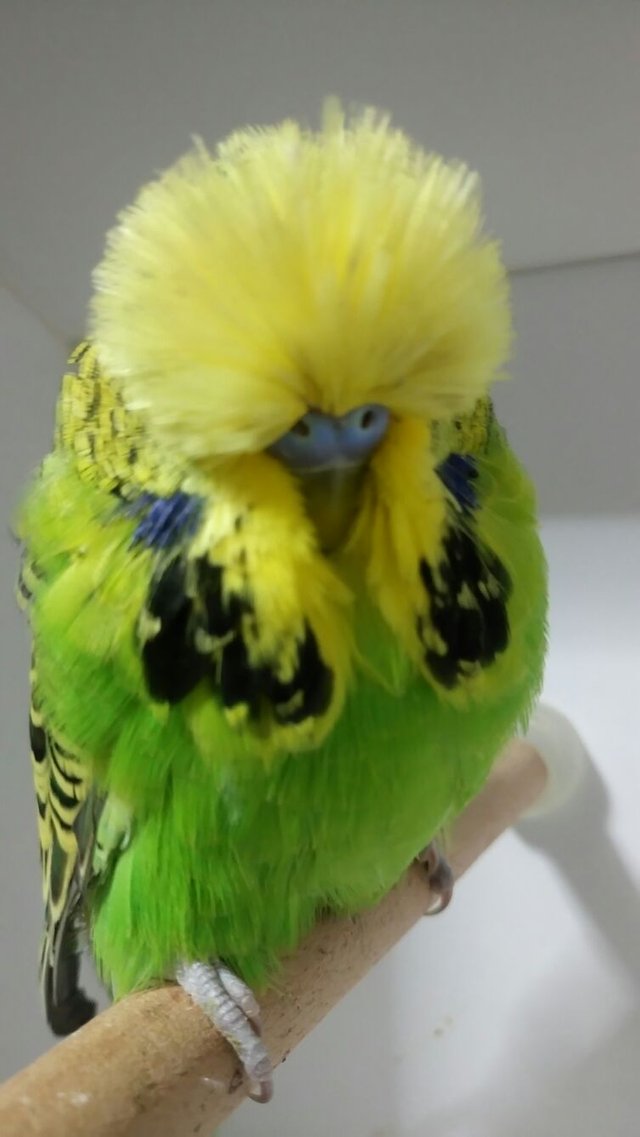Budgerigar Breeding
Budgerigars can be fed easly in the cages. For this reason, breeding is easier than other cage birds. They can incubate 5 times a year. Parents take care of their babies. After the every second incubate, birds should be rested for a long time ( 1-2 mounths ) In summer and winter you can separate male and female birds. This will cause an increase in efficiency. Budgerigar breeding is easy but they should be taken care of during breeding season.
Preparation for Breeding
In budgerigars, males reach adulthood in 5-6 months, and females in 8-10 months. The most healthy and fertile breeding season is after 1 year in males and 1.5 years in females.The most healthy laying period should be between 1 and 1.5 years old.The budgerigar must be healthy in both to prepare for the breeding. Non-stratified, well-fed and energetic birds can be prepared for breeding. Birds must be in large cages where they can move with their long tails. There must be sand and ink fish bones in their cages. Female birds need plenty of calcium to lay eggs. The ink fish bone is a good alternate to meet this need. In addition, birds should be given plenty of vitamins during the production period. Especially "Vitamin E" is very important for healthy development of eggs and offspring. In this process, fresh vegetables and fruit should be given every 2 days as a supplement to the foods. The environment in which the cages are located should be a quiet corner with no sudden noise and sudden movements, which does not receive much air change, the temperature is constant. The birds must feel happy in this area. A follicle must be placed in the head, this follicle must be an enclosed receptacle that plugs in from the outside. Preferably these wooden houses are sold in all pet markets.
Ovulation and Incubation Period
At first the female bird starts to care about the nest. Sometimes they examine the nest for days. The female then begins to go in and examine the inside. Over time, the male bird will participate in this interest, which is the female bird.
Male birds are more cautious and protective about nesting. The male bird does not want the female bird to be out of the nest during the mating season and constantly forces the female bird to take care of the nest.There are marked changes in birds during the mating season. You can often see birds mating when you're watching them. In this period, birds become closer to each other than ever. Male birds constantly follow female birds. The female bird must be in the nest at this time. The male bird meets all the needs outside of it. Male birds meet 80% of the food needs of the incubating female birds. About 12-15 days after the birds' mating, the female bird makes their first egg. Ovulation indications in female birds include lengthening in the nest, falling on the wings, and swelling around the anus periphery and waist. They do not lay on the first eggs. They start to incubate after the second or third eggs.Budgerigars can make between 3 and 13 eggs. The first incubator makes an average of 4 eggs. After the ovaries are complete, the female in the incubator is fed by the male. During this time, the female bird will only come out of the nest to get to the toilet.
Babies
The baby budgerigar go out off egg in 18 days. On the first day they come out of the egg, the young birds become hairless, their eyes closed and still. But they show a very rapid development. Every day, you can see that they differences from the previous day. It is necessary to add some chips to the nest every day and add the new ones after a few days. You must take dirty chips from nest . When the pups are 1 week old, the feathers gradually start to form and the pups move inside the nest. When they are 10 days old, you can have an idea about their color. When they are 15 days old, there is almost no hair-free area on their body. When they are 25 days old, they will have a budgerigar shape. The wings and their tails start to grow. When they are 30 days old, they will be go out of nest. Always keep the bait on the ground of the cage during this process. At first, the babies, who will not be able to eat feed from the feeders, will learn to break the feed by exercising with these feeds on the ground. When babies begin to break the feed, they are now able to live on their own. They do not need their parents anymore.
Some of my budgies ;




please follow and vote mine,,i've follow and vote yours